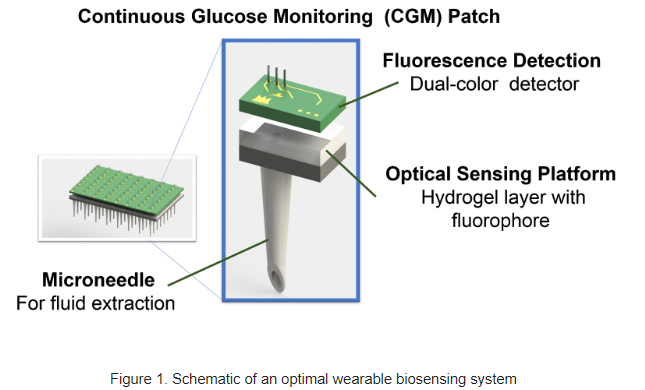
Continuous glucose monitors (CGM) are revolutionizing the way that patients with diabetes manage their condition. However, these systems are typically bulky, expensive and require calibration, meaning adoption is low. To promote wider adoption, CGMs must be accurate and stable, but also small, painless, and easy to use. We propose to develop MEMS-based technology towards an on-body, band aid-sized, wirelessly transmitting CGM system which painlessly extracts interstitial fluid with a dime-sized patch of microneedles and optically detects glucose from extremely small fluid volumes (Figure 1). To achieve this ambitious goal requires innovation across nanotechnology, micro-electromechanical systems (MEMS), and organic synthetic chemistry, and my particular contributions involve the development of the wearable device, specifically the MEMS extraction microneedles, and detection platform that houses the chemical sensor. Here we focus on the CGM sensor and various detection methods.
Reference:
[1] H. Kim, L. Theogarajan and S. Pennathur, "A repeatable and scalable fabrication method for sharp, hollow silicon microneedles", Journal of Micromechanics and Microengineering, vol. 28, no. 3, p. 035007, 2018. Available: 10.1088/1361- 6439/aaa6a8.